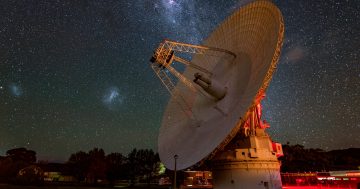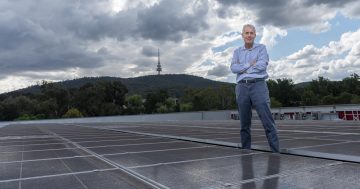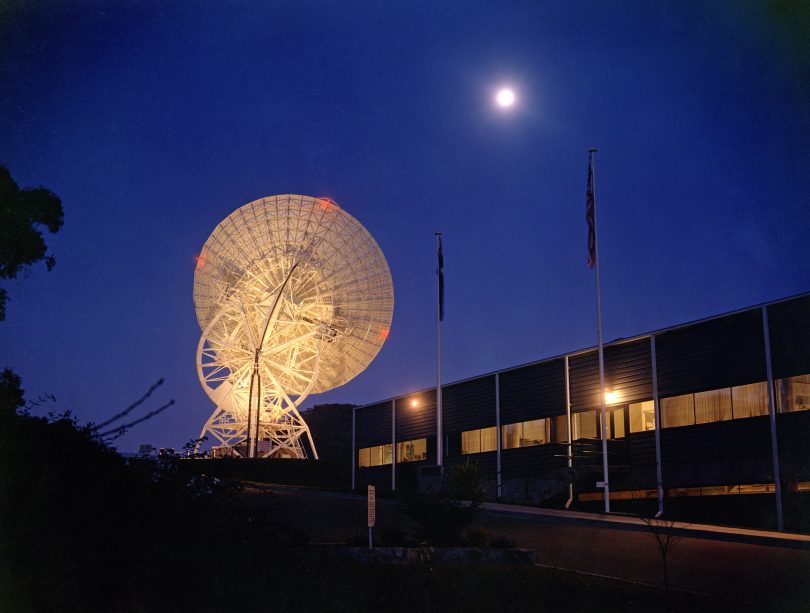
The Honeysuckle Creek antenna in action during an Apollo space mission. Photo: Hamish Lindsay, courtesy of Colin MacKellar.
When Neil Armstrong placed mankind’s first boot print on the dusty surface of the moon in 1969, he had no idea the debate it would spark back home on planet earth over where the camera footage of this monumental moment actually originated.
Not a Hollywood studio, okay.
The real dispute is here in Australia, between Canberra and Parkes.
Former director of the old Honeysuckle Creek Tracking Station near Tharwa, Mike Dinn, and his colleague John Saxon have attempted to settle it over the decades since, and they’re trying again this Saturday evening (27 April).
To celebrate the 65th anniversary of the iconic Shine Dome building (and its own 70th anniversary), the Australian Academy of Science is holding a public movie screening of The Dish, the 2000 movie about Australia’s involvement in the Apollo 11 mission.
This will be followed by a panel discussion with Mike and John, where they’ll tell the true story of what happened that day.
But first, some background.
To maintain continuous communication with the Apollo 11 mission, NASA needed three tracking stations around the globe. One dish was located at Goldstone in California, another near Madrid in Spain, and – after signing a treaty with the Australian Government in 1960 – the last in Canberra.
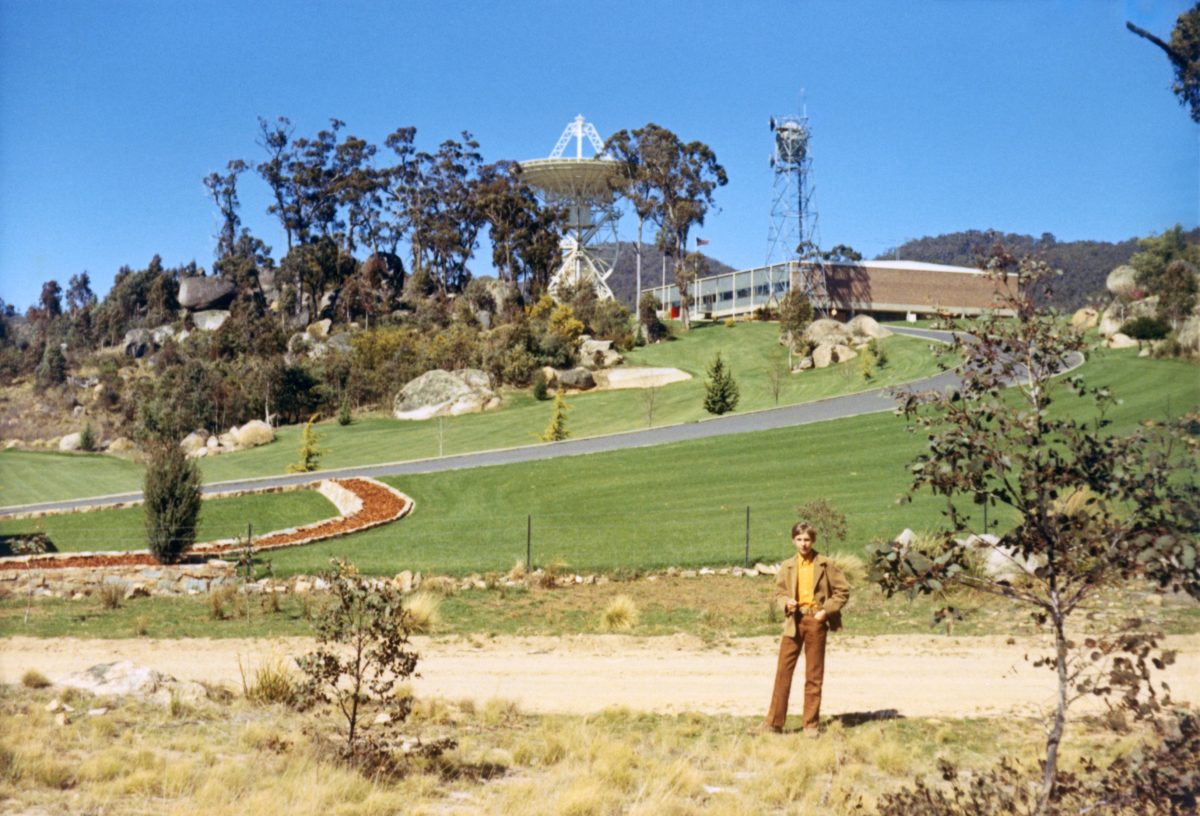
Honeysuckle Creek Tracking Station opened in 1967. Photo: Colin Mackellar.
“The agreement basically said ‘NASA will tell you what it wants done, Australia will do it, and we’ll tell them how much it cost’,” Mike recalls.
“Whoever set that up did a fantastic job.”
At the time, Tidbinbilla had its own 26-metre antenna with a more sensitive radio receiver, but the bulk of the heavy lifting was to be done at the Honeysuckle Creek Tracking Station, south of Tharwa.
Mike was an engineer, who spent years working on aircraft electronics and instruments first in England (where he was born) and then in Melbourne. He applied for a job at Honeysuckle in 1965 and, after a year’s stint at Tidbinbilla as deputy director, moved to Honeysuckle.
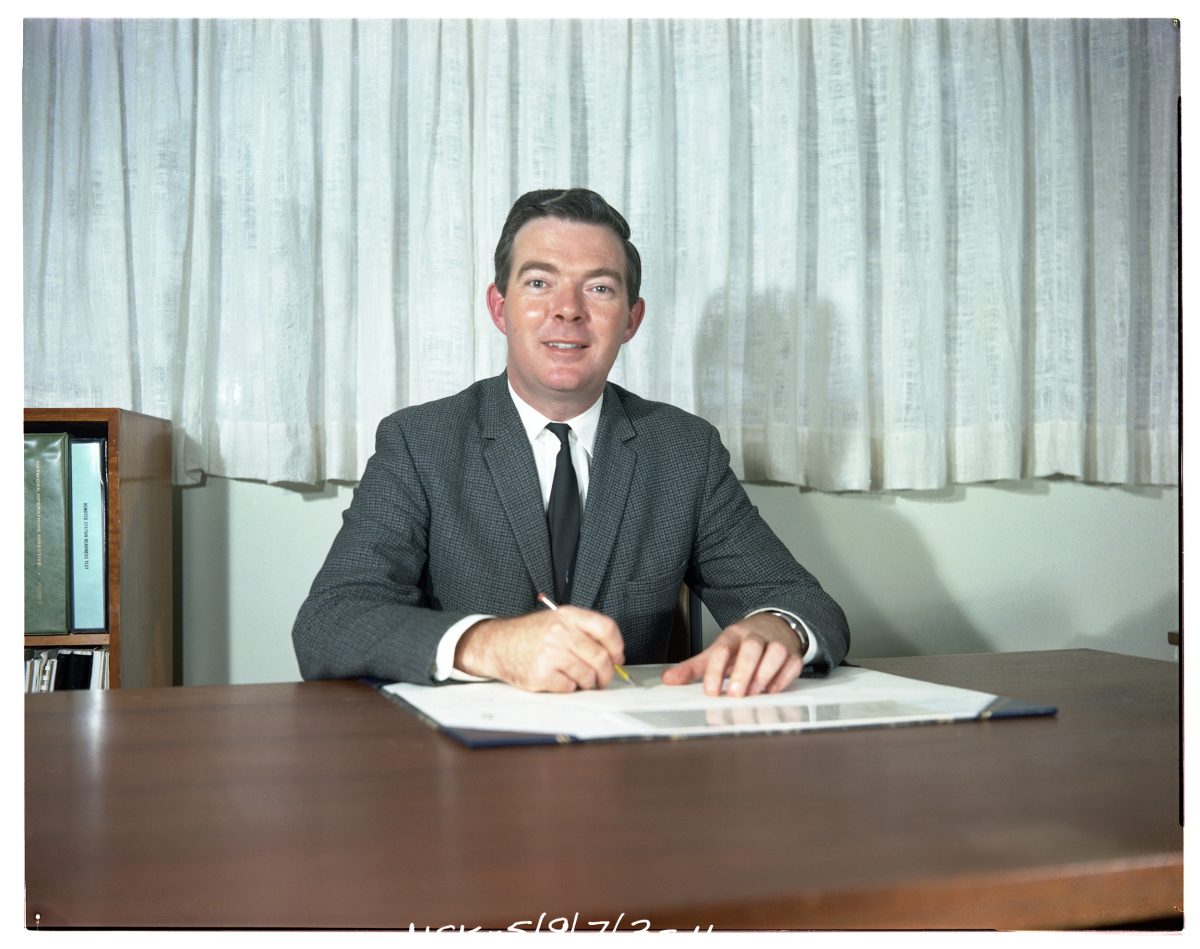
Mike Dinn, pictured in May 1968. Photo: Hamish Lindsay, HoneysuckleCreek.net.
“My role in both places as deputy director was to be in charge of real-time operations,” he says.
“I sat on the operations desk and responded to communications from NASA’s headquarters in Houston, Texas.”
The information – things like spacecraft status and breathing rates of the astronauts on board – ran through permanent lines to a small building off Kent Street in Deakin, and then off to Sydney and the US, at speeds of 2400 bits per second.
The year 1969 was especially busy, with a new Apollo mission launching almost every two months.
“All anybody had time to do was their job, and simply assume everybody else was doing their job,” Mike says.
Leading up to July and Apollo 11, “it was a matter of being familiar with the overall plan” and ensuring all the tech was up to date. After all, Honeysuckle would also have two wing stations to work with, one at Tidbinbilla and the other in Parkes. As the earth rotated and the stations in the US and Spain lost signal, it would be up to these three to manage communication for an eight and 11-hour window each day.
“We could have one dish pointing at the lunar module and one pointing at the command module, so we could track both,” Mike explains.
“For some periods, the California station would be handling comms with the lunar module, and we’d be handling the command module, so there was some overlap too.”
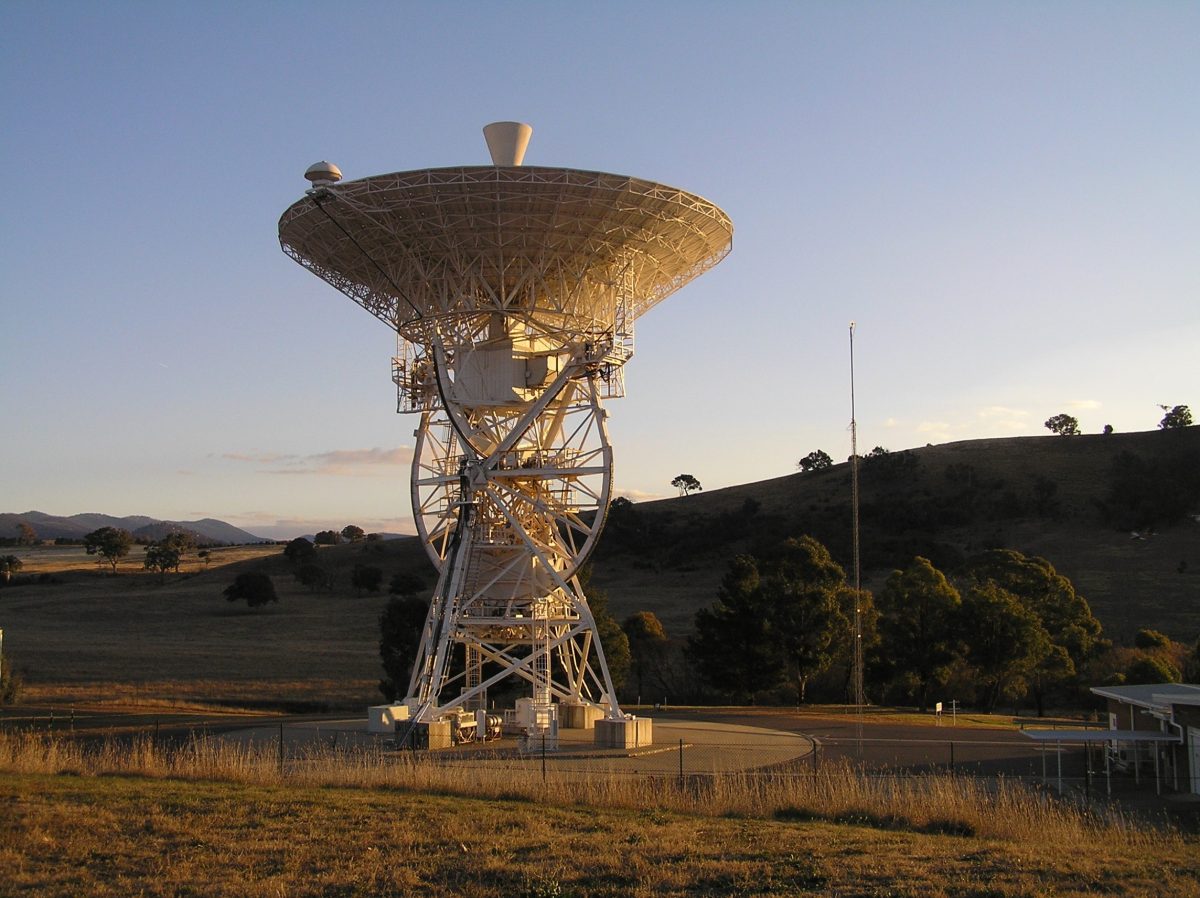
The DSS-46 dish now lives at Tidbinbilla. Photo: Colin Mackellar.
Clear television footage was towards the bottom of Mike’s priorities when the lunar module landed on the moon. Astronauts Armstrong and Aldrin were slow to get into the suits, so by the time they were ready to open the hatch, the moon was sitting right on Australia’s horizon.
The telescope at Parkes was tilted as close to the ground as it could get, when a strong gust of wind rammed it back against the gears. It took eight minutes before it regained a clear signal. During this time, Mike and many others agree Honeysuckle had the best view.
“The TV from Honeysuckle went to Sydney and was selected in preference to Parkes … so the signal of the first step sent to Houston for the international telecast was from Honeysuckle.”

Footage of the “one small step for man” was beamed down to Australia’s tracking stations. Photo: NASA.
Attempts to talk CSIRO around to this position, however, have ended in “not very happy” reactions.
Honeysuckle closed in 1981, and the famous dish moved to Tidbinbilla near the front gate. Mike retired in 1994 on Apollo 11’s 25th anniversary, with two NASA public service medals to his name and a growing sense of the importance of the event he’d helped cover.
“At the time, you don’t have the luxury to even see the overall picture, let alone appreciate it. But I am impressed by our confidence and competence in that era. Although we didn’t have that much computing power, we did have a lot of skilled people.”












